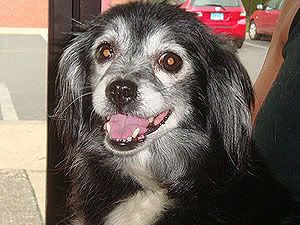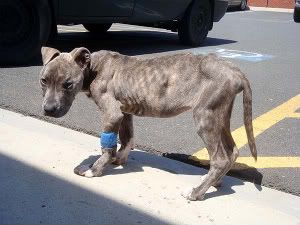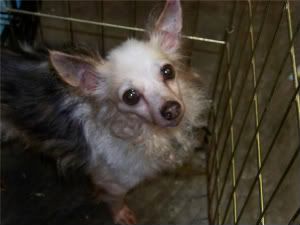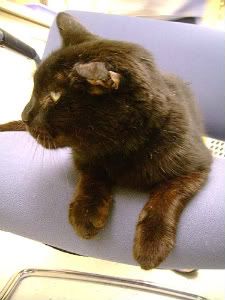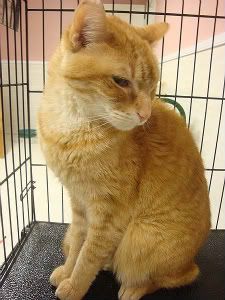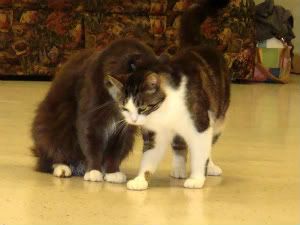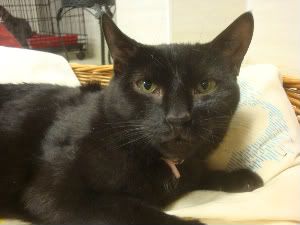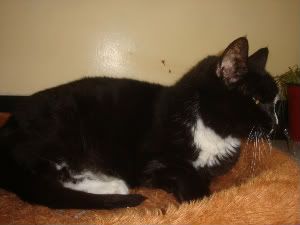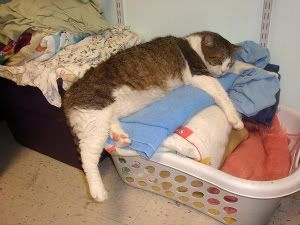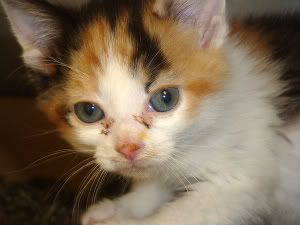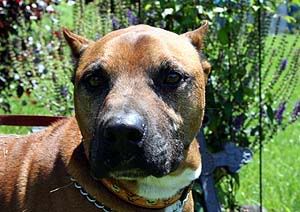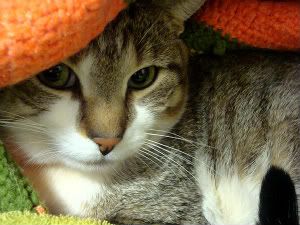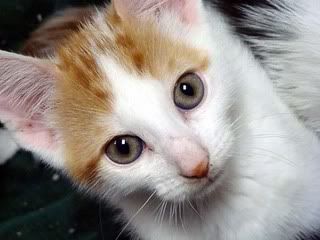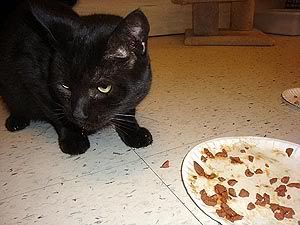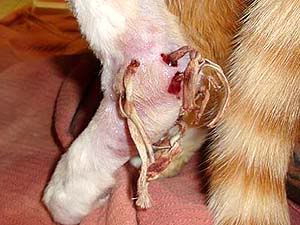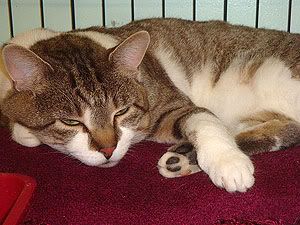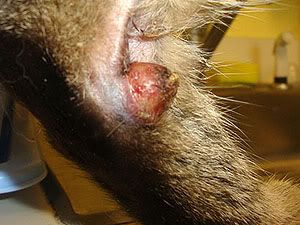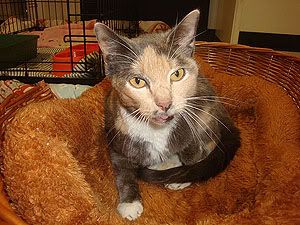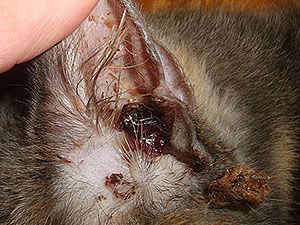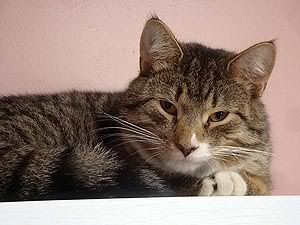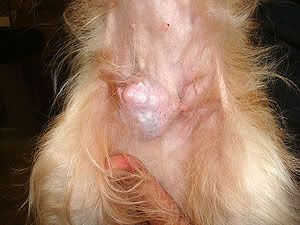Copulation, Copulation, Copulation: Ending Feral Cat Overpopulation
There is a wild animal that lives in almost every country on Earth, that causes no harm and leaves no trace of its presence, but still nearly 100% of them are killed when brought to animal shelters and animal control facilities. These are stray cats, alley cats, and neighborhood cats. They are feral, wild animals. Trap-Neuter-Release is the only proven effective method for controlling the feral cat population. It saves not only lives, but money for shelters by reducing intake and euthanasia, reduces “annoying” behaviors, and preserves the ecosystem.
Feral cats are cats that have either been born outside or domestic cats that have been abandoned and returned to their wild instincts. They are found in every community in the country and across the world. Trap-Neuter-Release (TNR) is the most effective and humane way of managing feral cat colonies. TNR is a process in which feral cats are humanely trapped, neutered, vaccinated, and released into safe areas called colonies. These colonies are maintained by volunteers, either from TNR organizations or simply people who want to help the cats, who leave food and water every day, as well as keep records on all the cats in the colony and monitor for new arrivals.
There is only one way to control the population of feral cats effectively, and that is to neuter all the cats in a colony and release them. By preventing new litters from being born the population will decrease naturally over time. The average unspayed female cat has 22 kittens per year, six of whom will be female and survive to an age where they can reproduce. Each of those six will produce their own 22 kittens per year, which is 132 kittens in a single year from one unspayed female (Stanford Cat Network).
Trap-Neuter-Release has been proven to work in many areas of the country. In Cape May, New Jersey, TNR has been used for the last ten years to reduce the feral cat population from 450 to only 100 cats (Alley Cat Allies). Stanford University had over 1,500 feral cats living on the campus as of 1989. Thanks to the TNR efforts supported by students, faculty, and members of the community there are now 200 cats on the campus. The colonies are watched over by the Stanford Cat Network, which provides medical care, food, and fresh water to all the cats. If TNR had not been implemented, the original 1,500 cats would have been taken to the Santa Clara Animal Control facility and killed. This would not have stopped students from dumping their pets at the end of term, which is how the cats arrived on the campus, and the number of cats would quickly rise again. Using TNR, however, raises awareness of the issue, preventing students from abandoning their pets.
By stopping the animals from reproducing, but not removing them from their territory, they can continue keeping new cats from arriving. Simply killing (note that the word euthanasia does not apply to feral cats because their death not does fit the definition of “putting to death painlessly an animal suffering from an incurable, esp. a painful, disease or condition” [American Heritage Dictionary]) the cats will not prevent new animals from taking over the empty territory. To continue trapping and killing the cats is expensive for animal shelters and does not solve the problem.
A popular argument against TNR is that feral cats do not lead a quality life, and so the only humane thing to do is euthanize them. However, feral cats are vaccinated against disease, neutered, and have a caretaker to provide fresh food and water. They therefore have a much higher quality of life than most wildlife. According to groups such as TNR Reality Check, feral cats meet gruesome deaths on the street when they are hit by cars and many simply go missing. As a comparison, think of the number of squirrels you see dead on the road each week. Does this mean we should trap and kill squirrels because they might get hit by cars? No, that would be absurd.
Because cats that have been through TNR are vaccinated against rabies and distemper they are much less likely to ever contract these diseases. According to Alley Cat Allies, a national TNR organization, the infection rate in feral cats is 4%, the same as in indoor cats, and a study conducted in 1989 (“Experimental Rabies in Cats”) reports full protection against rabies for three years after a single vaccination.
The lives of the cats are also improved by removing the possibility of breeding. Breeding for cats is a violent and painful process, especially for the females. Male cats have small barbs on the penis which stimulate ovulation in the female by scraping against the inner walls of the vagina. This is one of the reasons cats scream during breeding. The drive to mate also causes fighting and yowling among males, which is prevented by neutering them. This keeps the cats safer and more comfortable, as well as appeasing humans living near feral cat colonies that do not wish to listen to such things. Neutering will also prevent cats from spraying, which creates a very offensive odor, and prevents fighting over territory. This makes life more pleasant for people in the area, but if they still don’t wish to live near feral cats, colonies can be trapped and moved to more secluded areas.
As stated, the only alternative to TNR is to kill feral cats. Some can be rehabilitated and adopted out, certainly, but some cats are simply too wild. For cats entering kill shelters there are only three options. They can be adopted, “euthanized”, or returned to their owners. Feral cats require more time to be socialized than the majority of facilities will give them and they have no owner in the traditional sense to claim them. 100% of feral cats to enter kill shelters are killed. By using TNR, all these lives are saved. In West Valley City, Utah the euthanasia rate was reduced by 40% the same year they began using TNR (Best Friends Animal Society).
It is common knowledge that veterinary care has become extraordinarily expensive, but this is not a barrier to TNR efforts. In fact, TNR saves money for taxpayers and shelters. Santa Clara Animal Control, the shelter that would have handled the Stanford University cats had TNR not been implemented, estimates a cost of $70 to hold a feral cat for the required three days, “euthanize”, and dispose of the body. However, they also place the cost to test, vaccinate, and neuter a cat at only $52. The Stanford Cat Network estimates that 41% of cats in Santa Clara County are feral, for a total of 168,463 feral cats. To kill all these cats, at $70 each, would cost $11,792,410. However, to test, vaccinate, and neuter those same cats would cost $8,760,076. This not only saves over three million dollars immediately, but it prevents Santa Clara Animal Control from taking in the offspring of feral cats and having to pay to kill those as well. Because so much money is being saved, the cost of TNR can be taken right from a shelter’s budget.
It is not only large organizations, however, that practice TNR. Any ordinary person can do this with their neighborhood cats. For these people the cost can seem prohibitive, but many low-cost spay/neuter options exist. In Connecticut the most well-known program is TEAM, Tait’s Every Animal Matters. For $70 any cat, even ferals, can be neutered, vaccinated, and given a physical exam. In 2008 alone they sterilized 12,000 cats (TEAM). TEAM services all of Connecticut, but other programs serve specific areas, such as Rehab-A-Cat in New Haven, Creature Kindness in Hamden, and The Greater New Haven Cat Project. Thanks to programs like these any person can afford to care for their colony properly.
Possibly the most insistent opponents of TNR are the people concerned for wildlife, especially birds. This ignores many of the basic facts about cats. Cats are opportunistic feeders. They will go for the easiest prey, which are rodents. Birds are simply too much effort to catch. This isn’t to say that no cats ever kill birds. Certainly some birds are killed by cats, but the major of cause of bird death is habitat destruction caused by humans. In a New Zealand study in which stomach contents of feral cats were examined, it was shown that on average 93% of the cats’ diets consisted of mammals and only 4.5% consisted of birds (Meower Power Feral Coalition). A similar study of feral cats living in urban areas in Pennsylvannia showed something even more startling, which is that 85% of the stomach contents of the cats was garbage, and only 15% was from rodents and birds (Meower Power Feral Coalition). This way of thinking also assumes that birds are more deserving of life than cats. Often the argument that cats are non-native is used, but starlings and sparrows are also non-native (Best Friends Animal Society).
In fact, efforts to protect birds on Macquarie Island, near Australia, by killing all the feral cats went terribly wrong. When the cats were all killed the rabbit population exploded, and the rabbits decimated the plant life that the birds relied on for shelter and food. The birds died. The feral cats turned out to have been protecting the birds, not killing them, and it isn’t only birds that are going to suffer because of the removal of the cats. There are plans to begin dropping poisonous bait starting in 2010 to attract rabbits, rats, and mice, in order to kill every specimen of these three species (Michael Casey – Associated Press). Roger Tabor, chairperson of the British Naturalist Association, said it best when he said, "You have to be very, very careful when…doing anything that changes the ecosystem…This happened in New Zealand. People argued that wildlife there was at risk, and that the terrible cats were causing the problem. So they got rid of them. What happened? The more significant predator turned out to be rats, whose population exploded because you removed the one check on the rat population: the feral cats,” (Best Friends Animal Society). The ecosystem is a very delicate thing, and oftentimes the effects of removing a single species can be disastrous. Far from being a danger to other species, cats are actually protecting them from far more dangerous threats.
If Trap-Neuter-Release is implemented nation-wide then the quality of life for cats will improve and humans will benefit from the lack of “annoying” feline behaviors and the lower cost of TNR. At the Meriden Humane Society there is one feral cat we call No-Tail. She is a beautiful calico that we took in as an older kitten. Her tail was infested with maggots and it had to be amputated. After her recovery she was released into our colony. She is fed wet and dry food every morning, and without fail she can be found in the evening sitting in front of the door waiting for her dinner. She’ll walk off a few steps when the door is opened, and won’t approach the plate until her caretaker pretends to look away from her, but no matter how shy she appears, there is no doubt that she appreciates our presence. In most shelters, this cat would stand no chance. She would have been killed immediately. However, she now leads a fantastic life, free to roam, but can still rely on us when she needs something. Getting involved with feral cats is extremely rewarding, knowing that you personally have saved a life, and it is easy to do yourself. Individuals can practice TNR in their own yards or volunteer for an establish TNR group. Even the smallest donations to TNR groups are appreciated so much, because every dollar or old towel or bag of cat food is helping to save the lives of some of the least valued animals in America.
Works Cited
Casey, Michael. “Removing cats to protect wildlife on island backfires”. January 13, 2009. http://news.yahoo.com/s/ap/20090113/ap_on_re_au_an/as_australia_rabbit_infestation
Meower Power Feral Cat Coalition. Meower Power Feral Cat Coalition. 2008.
Miller, Sandy. “Hiding in Plain Sight: Feral Cat Colonies Thrive With TLC and TNR”. Best Friends Magazine May, 2008. 17+.
Monroe, Estelle. “Living in the Gray Zone”. Best Friends Magazine. December, 2003.
Mountain, Michael. “Blaming the Victims”. Best Friends Magazine July, 2003.
Robinson, Becky. Alley Cat Allies. 2008. www.alleycat.org
Stanford Cat Network. Stanford Cat Network. 2002.
Tait’s Every Animal Matters. Tait’s Every Animal Matters. 2008. www.everyanimalmatters.com

